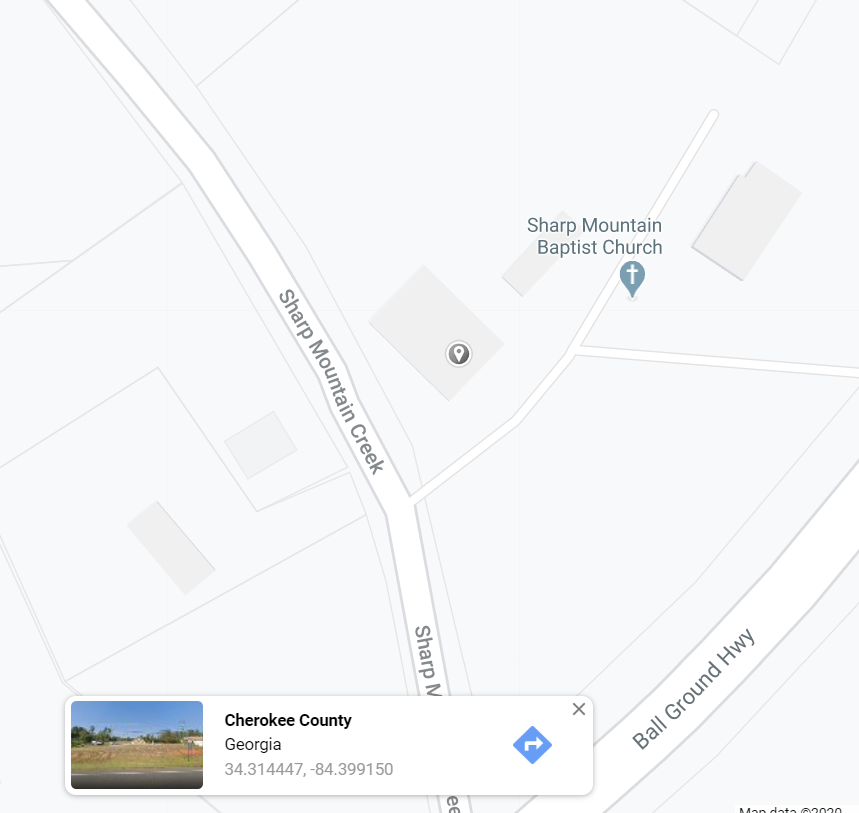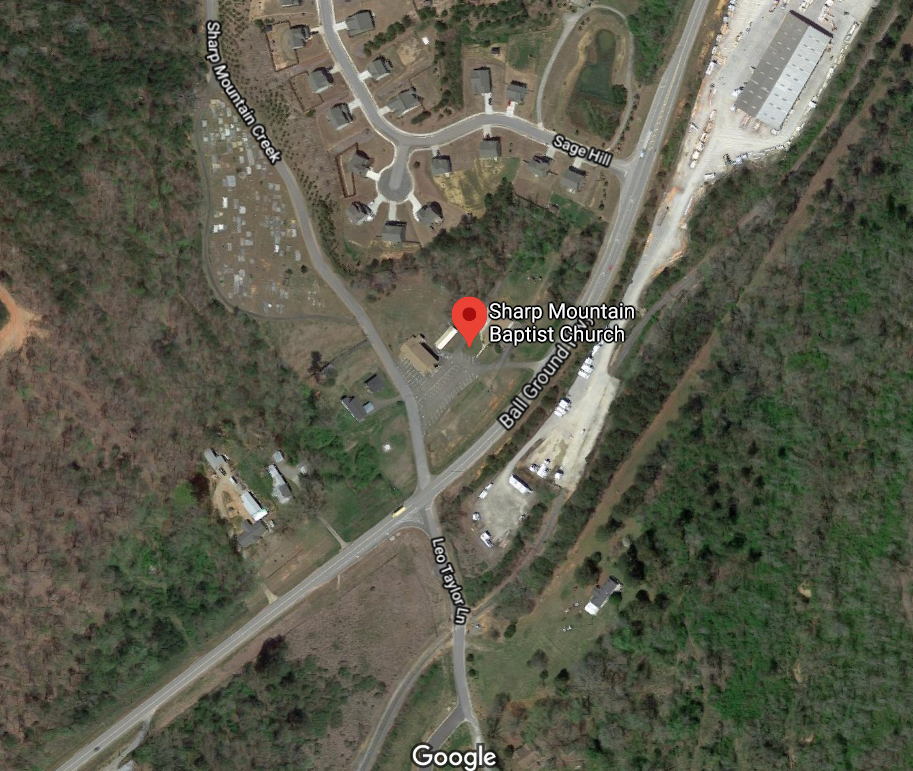





 On August 12, 1836, a faithful group of Christians came together in a Cherokee County, Georgia to constitute a new Baptist church. Named the Sharpe Mountain Baptist Church, this new church quickly earned a reputation for welcoming people from all races. At the very first church service, "Colored People" and Indians were present and became active members. Several are buried in the predominately white cemetery. Church records reveal that one former slave, Aunt Rose Lay, remained a member until her death. "After whites on communion day, she was served the sacrament and a white woman would wash her feet." Very unusual for a community and a church located in a southern state known for it's cotton plantations and large slave populations. Soon, an unbelievable event would add to this church's reputation and ensure it would forever be remembered in Cherokee County, Georgia history.
On August 12, 1836, a faithful group of Christians came together in a Cherokee County, Georgia to constitute a new Baptist church. Named the Sharpe Mountain Baptist Church, this new church quickly earned a reputation for welcoming people from all races. At the very first church service, "Colored People" and Indians were present and became active members. Several are buried in the predominately white cemetery. Church records reveal that one former slave, Aunt Rose Lay, remained a member until her death. "After whites on communion day, she was served the sacrament and a white woman would wash her feet." Very unusual for a community and a church located in a southern state known for it's cotton plantations and large slave populations. Soon, an unbelievable event would add to this church's reputation and ensure it would forever be remembered in Cherokee County, Georgia history.